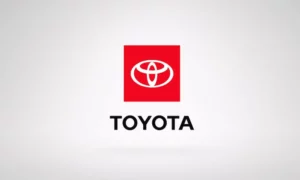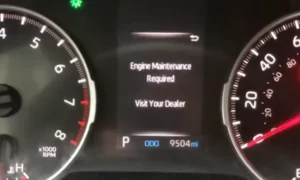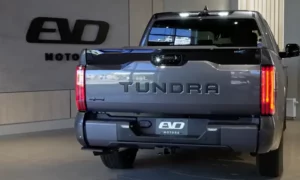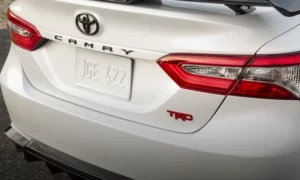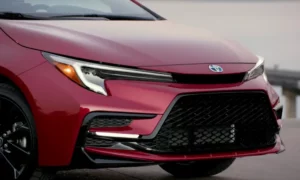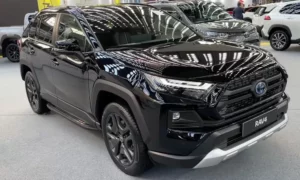Would you be inclined to purchase a car that had a warning where if you started to drift into another lane, you’d be alerted? Or if there was a chance you would lose control, you would be notified? We say yes because we feel it is a step in the right direction.
Toyota Sway Warning
Toyota Sway Warning is a safety feature that has been implemented to warn drivers in unsafe situations. It is a part of Toyota’s Lane Departure Alert System. If the vehicle is swaying, an alert will be set off.
This will sound to the driver and a message will be displayed on the informational display. The coffee cup that is displayed can help to remind you it is time to take a break to either get rest or wake up.
Toyota Sway Warning will operate as long as all of the following criteria is met:
- The setting for “Sway Warning” in the multi-information display is set to “ON”.
- Vehicle speed is at least 32 mph (50 km/h) or more.
- The width of the traffic lane is about 9.8 ft. (3 m) or more.
- No system malfunctions have been detected.
Sway warning is part of the Lane Tracing Assistant (LTA). Under this safety feature, the driver will be alerted if the vehicle deviates from the lane. This system can help the driver operate the steering wheel slightly to avoid going off course. Both white and yellow lines are recognized with this system.
As there is a radar system and a front camera, preceding cars can be detected.
Toyota makes and models that include the Sway warning:
- Prius Prime
- Prius
- Corolla
- Corolla Hybrid
- Corolla Hatchback
- Camry
- Camry Hybrid
- Avalon
- Avalon Hybrid
- Mirai
- Sienna
- Tundra
- Tacoma
- C-HR
- RAV4
- RAV4 Hybrid
- RAV4 Prime
- Venza
- Highlander
- Highlander Hybrid
- 4Runner
- Sequoia
- Corolla Cross
There are various makes and models in previous years that also include Sway Warning.
Sway Warning and Safety Sense
Toyota first introduced Safety Sense in March 2015. It was offered to 68 countries and regions globally. Lane Departure Alert was one of the core systems introduced, but Sway Warning was not a part of this. This first introduction was considered the first generation.
In January 2018, the second generation of Safety Sense was introduced. Included in this was Lane Tracing Assist. The Sway Warning is a component of LTA. The vehicle is able to be centered in a lane as when Adaptive Cruise Control is activated, the system helps the driver with the steering wheel.
Today, Toyota has Safety Sense on vehicles in 108 countries and regions globally. Over 16 million vehicles are equipped with Safety Sense. Toyota has plans to expand on its Safety Sense, expanding in protection against accident-prone areas around junctions.
There are plans to offer emergency steering assist, dynamic radar cruise control with curve speed reduction, and driver emergency stop assist.
Can You Turn Off Sway Warning?
Yes, you may turn the sway warning on and off. One may also adjust the settings on how sensitive this feature is.
To turn your sway warning on and off, follow these directions.
First, press and hold the OK button.
Next, go to Lane Center. Select to enable or disable the lane centering function.
To change the sensitivity, select to set the warning sensitivity.
If you wish to change the sway warning, you should select to enable/disable the vehicle sway warning.
If you wish to change Sway Sensitivity, you will need to select to set the vehicle sway warning sensitivity.
Relying on Toyota Sway Warning
While Toyota has an excellent Sway Warning under its LTA system, you should not completely rely on this. You still need to pay attention to the road and assume full responsibility for the road.
If the driver does not pay attention to the road and their surroundings, serious accidents and injuries can occur, including death. The driver should never assume that if they were to fall asleep, the sway warning would wake them up should they cross over the yellow or white lines.
One should never rely on the sway warning under these conditions:
- The car is being driven on a snow-covered highway or road.
- The vehicle is traveling through a construction zone.
- The road is slippery due to rain, hail, sleet, snow, or any other conditions.
- The yellow or white lines are hard to see due to fog or other similar circumstances.
- Your vehicle is hauling a trailer.
- You have a spare tire or chains on your vehicle.
- Your car is being driven in a temporary lane.
- Tire inflation levels are low.
Conditions in Which Sway Warning May Not Work Properly
As with many things, sway warning may not work properly 100% of the time. These times could occur when:
- Your car is driving around a sharp curve.
- Your vehicle is driving where it merges or diverges.
- Guardrails or poles are mistaken for either the white or yellow lines on the road.
- There are repair marks on the roadways labeled that are mistaken for white or yellow lines.
- You have crossed an intersection.
- A crosswind strikes the vehicle.
- The car is driven at very high speeds.
- Shadows cover the road that runs parallel to the white or yellow lines.
- The car is driven on a road with puddles or that is wet with rain or snow.
- The car is being driven on a slope.
- The lane of traffic is very wide or narrow.
In Conclusion
Toyota’s Sway Warning is a great safety feature that can help a person stay in their lane. If a person has become distracted or is getting drowsy, the warning can alert them to get back on track. Remember the purpose of the sway warning. Lane tracing assist is to provide alerts after you have started driving. You should never get behind the wheel if you are already drowsy.



